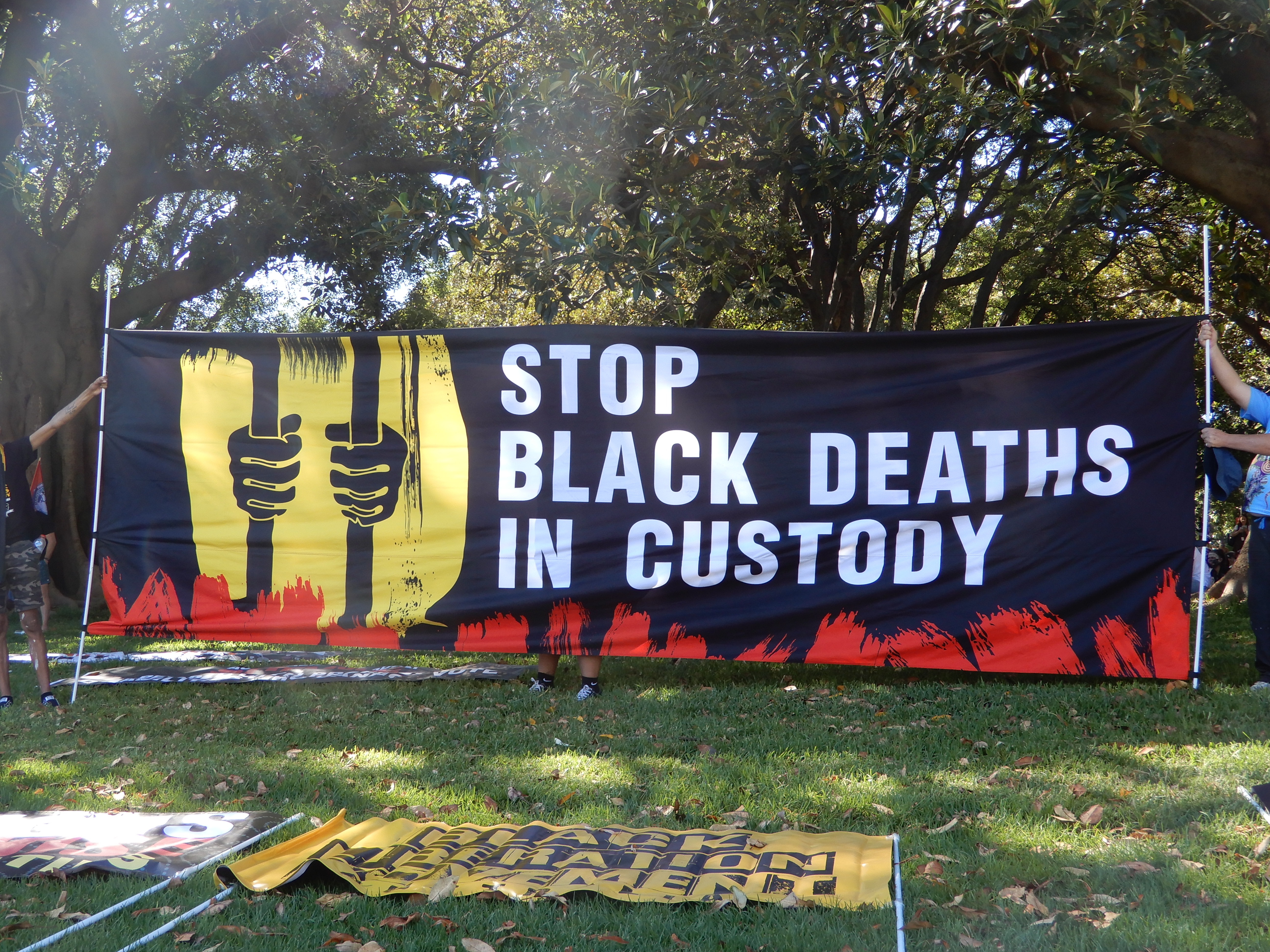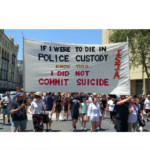Corrections Criminally Liable Over First Nations Custody Deaths, Says Former NSW Magistrate David Heilpern

The 15th of April marks 30 years since the Royal Commission Into Aboriginal Deaths in Custody handed down its final report, which made 339 recommendations aimed at preventing First Nations custodial deaths.
Most of these recommendations, however, have never been implemented. And since mid-April 1991, there have been around 460 Aboriginal custody deaths, with five having occurred over the 32 day period ending on 3 April.
One of these deaths involved a 44-year-old Aboriginal woman having taken her own life by hanging at Sydney’s Silverwater Prison on 5 March.
This occurred despite the commission having recommended the removal of all hanging points from cells and lockups three decades ago.
During a 9 March budget estimates hearing, NSW Greens MLC David Shoebridge asked Corrective Services commissioner Peter Severin, why “First Nations women are still being placed in prison cells in NSW that have hanging points”?
Severin answered that “there is no dedicated budget for removing hanging points”, although there are some “minor works” underway at certain prisons. And he added that as the deceased woman was assessed not to be at “risk of self-harm or suicide”, she was placed in “a normal cell”.
Criminal negligence
Former NSW Magistrate David Heilpern published an article last week in the Byron Shire Echo, in which he assumes the role of the prosecutor making a submission to judges presiding over a hypothetical case involving the Corrective Services commissioner and the NSW corrections minister.
Based on the precedent set by the 1977 UK case R versus Stone and Dobinson, Heilpern argues that both the minister and the commissioner should be found guilty of manslaughter over the failure not to have removed all hanging points, which resulted in the recent death at Silverwater.
As further proof to the claim of criminal negligence, Heilpern cites the 2020 recommendation for hanging point removal made by NSW deputy state coroner Harriet Grahame in the coronial inquest into the custody death of Gamilaraay, Gumbaynggirr and Wakka Wakka man Tane Chatfield.
And the former magistrate also points out that while Severin maintains there’s “no dedicated budget for the removal of hanging points”, since the 2016 state budget, the government has poured $3.8 billion into the NSW prison system.
A nonconforming legal professional
David Heilpern was the youngest magistrate in Australia when he was appointed in 1998. Over his time on the bench, he was well-known for speaking out against the impact he could see unjust laws were having in his courtroom. And he certainly hasn’t stopped since giving up the gavel.
Over the past year, Heilpern has been actively campaigning to see NSW drug driving laws overhauled so they no longer penalise people who aren’t driving under the influence of an illicit substance. And he’s currently practising as a lawyer at Mullumbimby’s Barefoot Legal.
Sydney Criminal Lawyers spoke to former Magistrate David Heilpern about the precedent set in Stone and Dobinson, his thoughts on the assertion that there’s no money to remove hanging points, and why he believes the Royal Commission’s recommendations remain unacted upon.

In a recent article in the Echo, you draw attention to the multiple First Nations deaths in custody that have occurred over the last month.
In an imagined submission for the prosecution, you suggest that the court finds Corrective Services NSW commissioner Peter Severin and NSW corrections minister Anthony Roberts guilty of manslaughter in relation to a custodial death.
In particular, you raise the hanging death of a 44-year-old First Nations woman at Silverwater Gaol. Mr Heilpern, what was it about this death that warrants manslaughter charges?
The article is a literary exercise in the sense that I raised hypotheticals. I don’t particularly focus on that death.
I was focusing more on a death that occurred in Tamworth a couple of years earlier, as well as the Corrective Services commissioner’s answers to some questions in the upper house put by David Shoebridge.
Obviously, there has been no coronial inquest regarding the Silverwater case. All I know is that it was a death by hanging, and I’ve gotten that from the media.
The point I was trying to make is there’s clearly a problem in the commissioner’s answers, as there are still hanging points in some cells in NSW. And that’s utterly unbelievable to me.
In making your point regarding the manslaughter charges, you raise 1977’s R versus Stone and Dobinson. What’s the importance of this case in relation to custodial hanging deaths?
The importance is this: If Party A has a duty of care for Party B, and Party B dies because of an omission by Party A, then Party A can be criminally liable for manslaughter by gross negligence and showing reckless indifference to human life in those circumstances.
What happened in Stone and Dobinson’s case is they failed to care properly for a sister who was clearly suffering from mental health issues and anorexia.
They failed to care for her properly. She died as a result, and they were found guilty of manslaughter.
To me, there’s no difference with what’s happening in NSW currently. And that is, the commissioner for Corrective Services clearly has a duty of care for prisoners and, particularly, for Indigenous prisoners.
So, failing to exclude hanging points from cells, and in saying there’s no budget for it, in my view, is exactly parallel to Stone and Dobinson’s case.
The Royal Commission’s 165th recommendation was the removal of hanging points from prison cells and police lockups.
Following the recent death in Silverwater, Commissioner Severin said there’s some work being done at certain facilities in this regard, but basically there’s no budget to remove all points statewide.
What do you think about this lack of funding excuse being made 30 years after the original recommendation was put forward?
That the commissioner for Corrective Services has not been able to allocate a budget to ensure that there are no hanging points in cells absolutely beggars belief.
And it’s not just this commissioner, but every one for 30 years has failed to remove hanging points from NSW cells. This completely beggars belief.
I don’t accept that they don’t have the money to do it. I don’t accept that there hasn’t been the budget allocated – in the sense that – where it is a matter of life and death, you find the budget.
There have been umpteen new prisons in that time. There are plenty of politicians driving around in white cars with drivers. There is money to be found when there is a serious commitment.
What it shows is that, essentially, they don’t care.
For all their words saying that they do care about deaths in custody, if they really did, they would put their money where their mouth is and actually remove a consistent danger to First Nations people in custody.
As you’ve mentioned, you cited the NSW deputy state coroner’s recommendation to remove hanging points in relation to the coronial inquest into the death of Tane Chatfield.
Tane took his own life by hanging in Tamworth Prison in September 2017.
Back then, the Tamworth Correctional Centre acting security manager suggested that removing hanging points in that facility wasn’t so straightforward as it was built over a century ago and it’s heritage listed.
What are your thoughts on this reasoning?
If prisons aren’t fit for purpose you close them. That’s what we do with hospitals. That’s what we do with police stations. And that’s what we do with courthouses.
It is what we do with a range of institutions when they are no longer fit for purpose.
If a prison is no longer fit for purpose because it is no longer possible to modify it to avoid hanging points, then you close the prison, and you build another one.
That’s precisely what they did to Grafton Prison. It was deemed no longer fit for purpose, so they built a new one.
If it’s good enough for hospitals, police stations and courthouses, then it’s good enough for First Nations prisoners to be kept safe by having them held in buildings that are actually fit for purpose.
First Nations custodial deaths that come under scrutiny usually fall into two categories: those where there are questions around direct force being applied by officers or cases that amount to neglect of duty of care.
In terms of neglect of duty of care, the coroner usually goes on to call for a policy review, while no one is directly held accountable.
Does a shift have to occur here in terms of accountability?
Absolutely. That was the point I was making in the article. There is actually criminal liability for omission to provide care that leads to death.
The article was slightly tongue in cheek. But I hope it has a real punch in making people think twice about the criminal liability of those in charge of prisons if they fail to ensure that prisoners are kept safe, in accordance with recommendations that are now decades old.
And lastly, Mr Heilpern, next week marks 30 years since the Royal Commission handed down its final report.
As in the case with hanging points, often the issues raised in Aboriginal custodial death inquests directly involve recommendations that have simply been ignored.
In your opinion, why wasn’t more done in relation to the vast number of recommendations that were made in the early 90s? Why haven’t successive Australian governments attempted to apply this blueprint for substantial change?
There are no votes in prisons. There are no votes in the overrepresentation of Indigenous people in custody. Until there are, I expect that change will be glacial.
The fact is that governments have priorities that ensure their votes. Where there are no votes, it’s not a priority. And that’s why, sadly, the recommendations have significantly been ignored. Hanging points is a classic example of this.
And although, Indigenous communities and many lawyers are devastated by Aboriginal deaths in custody, it doesn’t resonate with our politicians.







